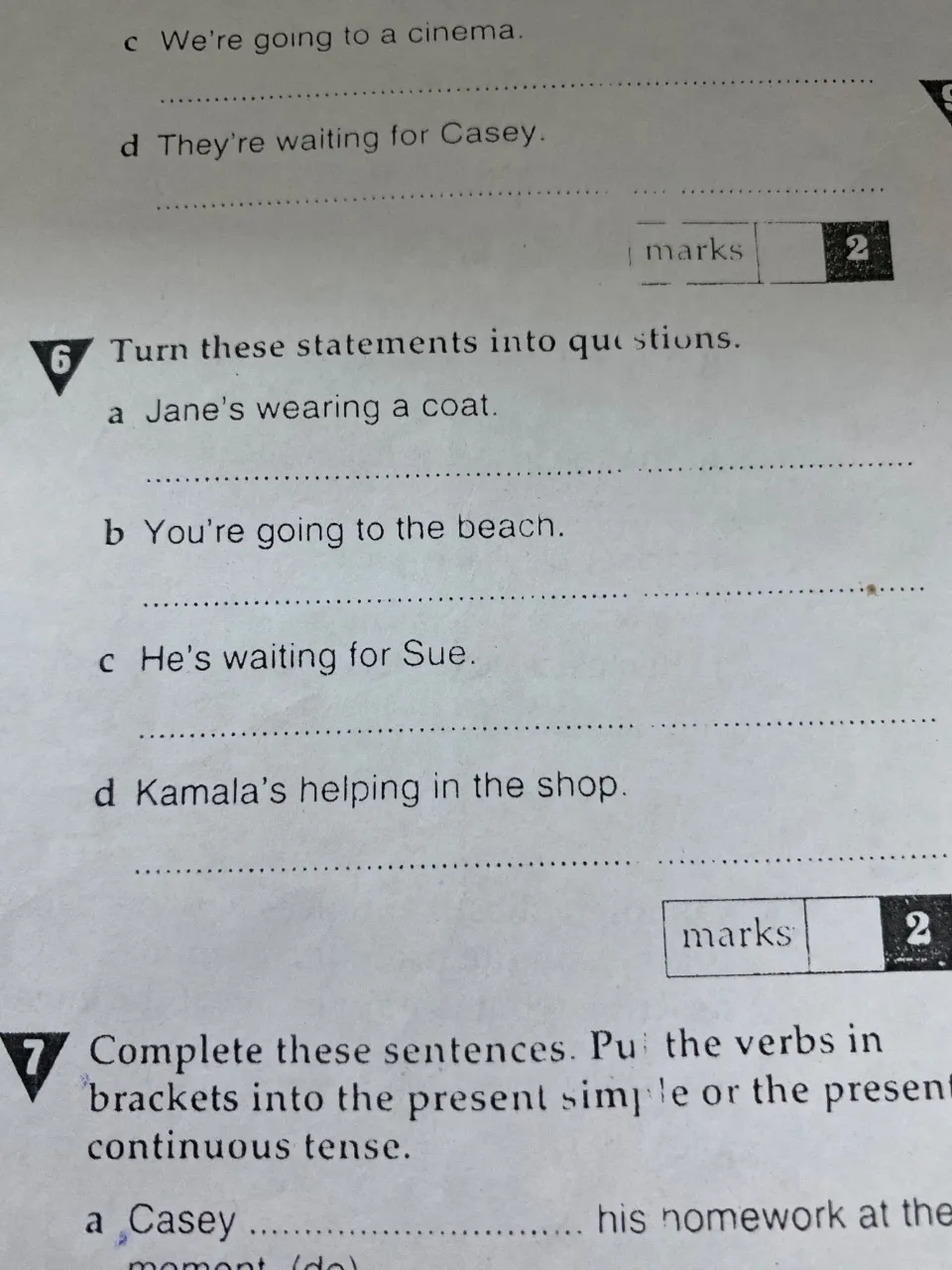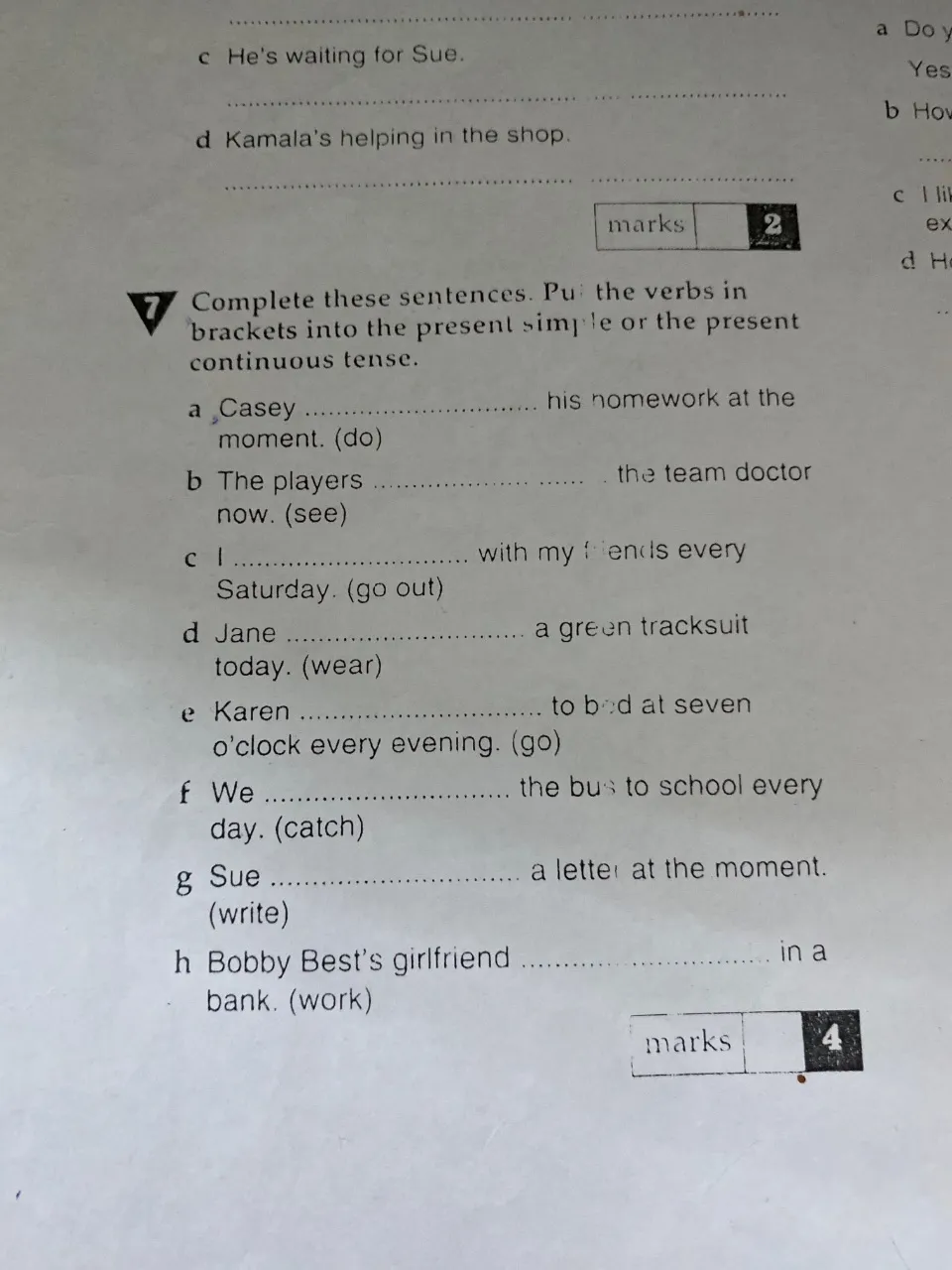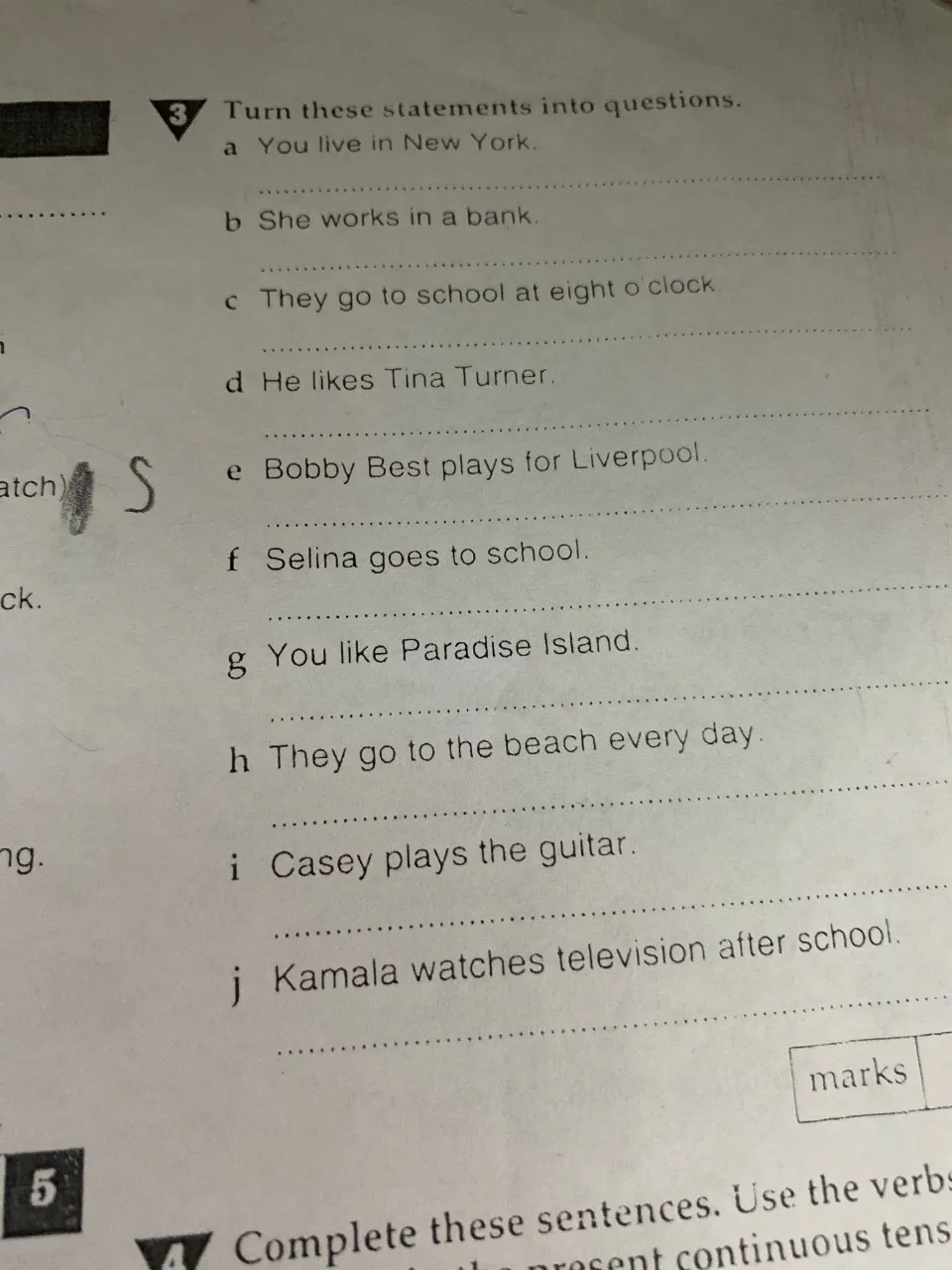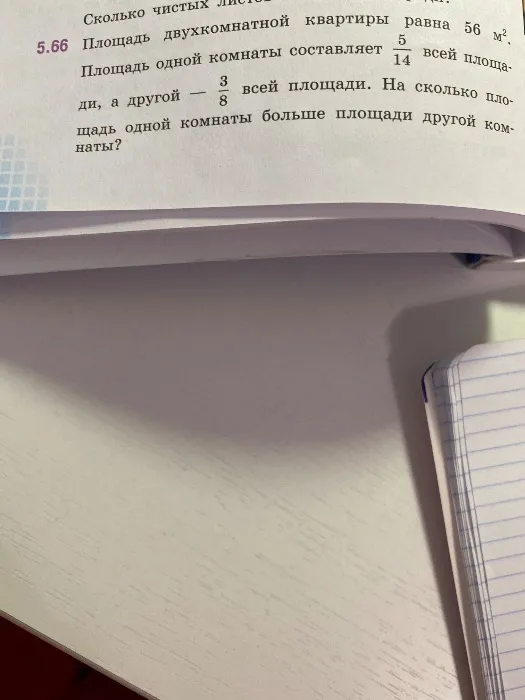My Content
Account
Catalog
System
App & Social
Our Projects
×
![]()

{
"subject": "English",
"grade": 5,
"lang": "en",
"url_subject": "english",
"title": "Converting Statements to Questions in English",
"description": "Practice exercise on transforming affirmative sentences into questions and working with present tenses",
"keywords": ["English grammar", "question formation", "present tense", "continuous tense", "statement to question conversion"]
}
Давайте разберем задание по шагам:
1) Задание 6: Преобразование утверждений в вопросы
Для преобразования утверждений в вопросы нужно:
- Определить вспомогательный глагол (is, are, 's)
- Поставить его в начало предложения
- Добавить знак вопроса в конце
Ответы:
a. "Jane's wearing a coat" → "Is Jane wearing a coat?"
b. "You're going to the beach" → "Are you going to the beach?"
c. "He's waiting for Sue" → "Is he waiting for Sue?"
d. "Kamala's helping in the shop" → "Is Kamala helping in the shop?"
2) Задание 7: Заполнение предложений, используя глаголы в Present Simple или Present Continuous
Для глагола "do" в скобках нужно выбрать правильное время:
- Present Simple используется для регулярных действий
- Present Continuous для действий, происходящих в данный момент
Поскольку в предложении есть указание "at the moment" (в данный момент), следует использовать Present Continuous:
a. Casey is doing his homework at the moment.
Это задание помогает практиковать базовые грамматические навыки английского языка. 🎯

{
"subject": "English",
"grade": 5,
"lang": "en",
"url_subject": "english",
"title": "Present Simple and Present Continuous Tense Usage",
"description": "Exercise on choosing between Present Simple and Present Continuous tenses based on time markers and context",
"keywords": ["present simple", "present continuous", "English grammar", "verb tenses", "time markers"]
}
Давайте разберем задание 7, где нужно поставить глаголы в правильную форму Present Simple или Present Continuous.
Правило выбора времени:
- Present Simple: для регулярных действий, привычек (маркеры: every day, usually, always)
- Present Continuous: для действий, происходящих сейчас (маркеры: now, at the moment, today)
Ответы:
a. Casey is doing his homework at the moment. (at the moment → Present Continuous)
b. The players are seeing the team doctor now. (now → Present Continuous)
c. I go out with my friends every Saturday. (every Saturday → Present Simple)
d. Jane is wearing a green tracksuit today. (today → Present Continuous)
e. Karen goes to bed at seven o'clock every evening. (every evening → Present Simple)
f. We catch the bus to school every day. (every day → Present Simple)
g. Sue is writing a letter at the moment. (at the moment → Present Continuous)
h. Bobby Best's girlfriend works in a bank. (постоянная работа → Present Simple)
Подсказка: 🎯
- Если есть слова "every", "usually" → используем Present Simple
- Если есть слова "now", "at the moment" → используем Present Continuous
- Для постоянной работы или регулярных действий → Present Simple

{
"subject": "English",
"grade": 5,
"lang": "en",
"url_subject": "english",
"title": "Converting Statements to Questions in Present Simple",
"description": "Exercise on transforming affirmative sentences into questions using do/does auxiliary verbs",
"keywords": ["present simple questions", "do/does questions", "English grammar", "question formation", "auxiliary verbs"]
}
Давайте разберем, как превратить утверждения в вопросы.
Правило:
- Для Present Simple используем вспомогательные глаголы do/does
- Do используется с I, you, we, they
- Does используется с he, she, it
Ответы:
a. "You live in New York" → "Do you live in New York?"
b. "She works in a bank" → "Does she work in a bank?"
c. "They go to school at eight o'clock" → "Do they go to school at eight o'clock?"
d. "He likes Tina Turner" → "Does he like Tina Turner?"
e. "Bobby Best plays for Liverpool" → "Does Bobby Best play for Liverpool?"
f. "Selina goes to school" → "Does Selina go to school?"
g. "You like Paradise Island" → "Do you like Paradise Island?"
h. "They go to the beach every day" → "Do they go to the beach every day?"
i. "Casey plays the guitar" → "Does Casey play the guitar?"
j. "Kamala watches television after school" → "Does Kamala watch television after school?"
Важно помнить! 🎯
- После does основной глагол теряет окончание -s
- Подлежащее ставится после do/does
- В конце вопроса ставим знак вопроса

Задача 5.66
Дано:
- Площадь двухкомнатной квартиры = 56 м²
- Площадь первой комнаты = $\frac{5}{14}$ всей площади
- Площадь второй комнаты = $\frac{3}{8}$ всей площади
Найти: на сколько площадь одной комнаты больше площади другой?
Решение:
1) Найдем площадь первой комнаты:
- $S_1 = 56 \cdot \frac{5}{14} = 20$ (м²)
2) Найдем площадь второй комнаты:
- $S_2 = 56 \cdot \frac{3}{8} = 21$ (м²)
3) Найдем разницу площадей:
- $S_2 - S_1 = 21 - 20 = 1$ (м²)
Ответ: площадь второй комнаты больше площади первой комнаты на 1 м².


Use Homiwork as a regular app. It's convenient!
Add to Home ScreenUse Homiwork as a regular app. It's convenient! Open your Safari menu and tap 'Add to Home Screen'.


By starting to use the service, you accept: Terms of Service, Privacy Policy, Refund Policy
